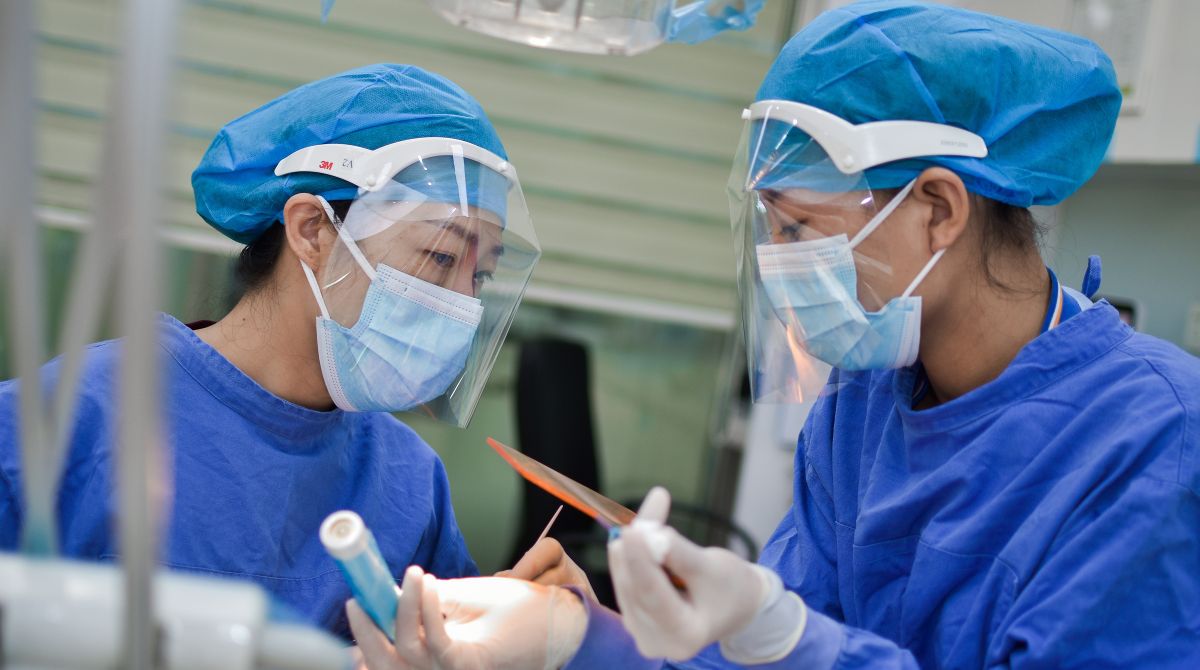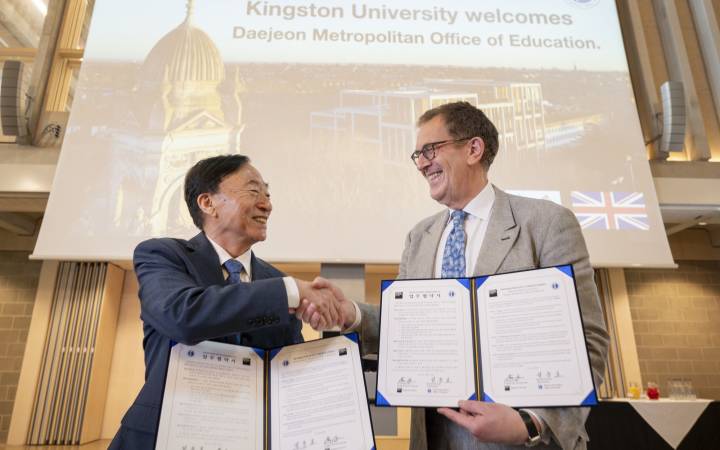International research into availability of PPE during Covid-19 conducted by intensive care expert at Kingston University and St George's, University of London
Posted Thursday 3 September 2020
 Healthcare workers from across the world gave their views on PPE availability and usage at the start of the pandemic.
Healthcare workers from across the world gave their views on PPE availability and usage at the start of the pandemic.
Leading critical care nurse and senior lecturer at Kingston University and St George's, University of London, Johannes Mellinghoff, has teamed up with nursing and allied health professionals and medical colleagues from around the world to conduct an extensive survey assessing personal protective equipment (PPE) available to medical teams at the start of the Covid-19 pandemic.
The survey saw Mr Mellinghoff and his counterparts, from as far as Australia, Argentina and Libya, question healthcare workers on the availability and use of PPE while caring for Covid-19 patients in intensive care.
Mr Mellinghoff, who is the current Chair of the Nursing and Allied Health Professions Committee of the European Society of Intensive Care Medicine and leads modules for intensive care, polytrauma and respiratory care in his role in the Faculty of Health, Social Care and Education, run jointly by Kingston and St George's, has worked in intensive care for more than 20 years.
During the pandemic, Mr Mellinghoff has been seconded to St George's University Hospitals Foundation Trust to help deliver vital intensive care training to NHS staff on the coronavirus frontline.
He explains the potential impact of the survey results and how the coronavirus pandemic has affected his role as a critical care nurse.
How was PPE used at the start of the outbreak?
When the pandemic hit, we identified several issues. There was a scarcity of PPE equipment as well as a knowledge and training gap. Some staff hadn't had any training, especially those people who normally work elsewhere and were redeployed to intensive care units. One example would be donning and doffing, which is what we call putting on and taking off the PPE. There are different techniques for doing this safely, and it can be done as a single person or in pairs. We identified a training issue when it came to doing this properly.
We also found that supplies of PPE were not available as needed during the outbreak. On occasion, equipment was being reused even though, from a manufacturer's point of view, these were single use items. In the UK, the Government has since changed its advice and some PPE can be reused with appropriate disinfection and  Critical care expert at Kingston University Johannes Mellinghoff conducted the survey with counterparts from across the globe. cleaning, but at the time there wasn't a consensus on this issue.
Critical care expert at Kingston University Johannes Mellinghoff conducted the survey with counterparts from across the globe. cleaning, but at the time there wasn't a consensus on this issue.
As well as infection control, there were concerns around the negative effects on the users themselves, with problems of pressure and skin damage from prolonged wearing of facemasks and visors. We need to design more comfortable PPE that is safe and can be worn without causing negative effects on healthcare workers.
When everyone was working extra hard, exhaustion and dehydration were also common. I think there are things that we shall need to plan for in the future such as appropriate breaks for staff.
As the pandemic continued things gradually changed for the better. Psychologically staff were adjusting to the situation. But clearly if the workforce was stretched, people didn't get the breaks they required. Some were very exhausted, and we needed more people trained prior to an outbreak to deal with it.
What lessons are there about PPE use in intensive care?
Policymakers will be looking into PPE use and recommendations for infection control policies. There is a drive to have more education and training within Europe and there are discussions of providing specialist training for people who don't normally work in intensive care. This is something that has happened throughout the pandemic, with those joining the wards given training on working in these environments. But there were people who weren't trained who should have been and, as critical care professionals, we need to make sure that policymakers are listening to what we are saying about safe intensive care delivery.
As well as this, there needs to be timely advice from local and global public health agencies and departments of health to make sure infection control practices can be adhered to. We have seen some mixed messages that were inconsistent with best practice causing unnecessary uncertainty among healthcare workers. In addition, our survey showed that while most respondents -from 90 countries - reported they had formal training in use of PPE, the actual number was around 83 per cent. That means we missed nearly two in ten people, which is quite stark considering the infection risk with this virus.
How could the UK better handle similar situations?
There are questions concerning capacity for care. If you haven't got capacity, you haven't got the workforce, and if you haven't got the workforce, you haven't got the trained staff to deal with such an incoming crisis. This emphasises that healthcare professionals within intensive care have had to work especially hard during the pandemic.
The jury's still out to really investigate what happened at the start of the outbreak and what we could have done differently. One of my colleagues said, "While the public was looking for the magic bullet, what we were supposed to do were all the things we have good evidence for". Unfortunately, due to the sheer number of patients this wasn't always possible.
The uncertainty of a pandemic causes us to do all kinds of things, but not necessarily things we normally do well under normal conditions. There's a question of what organisations need to do to stick to the rules we have in place and if corporate structures work well to support this.
How are the results of the survey influencing what you do?
What I'm doing now is working with an amazing team of clinical educators, having discussions on what's important and what works. We evaluate our educational approaches on a continuous basis and change things as we progress. As an academic it's about presenting the evidence and embedding this in our educational approach. Our survey shows clear evidence of what the problems were at a certain time point in the pandemic, and now it's about convincing people to come up with policies that will mitigate the risks, so we can learn from our experiences and adjust our systems.
What is logical on reflection is that healthcare workers were tired while working under extremely difficult conditions in the intensive care units. This introduced risk, to the staff themselves but also to the patients they cared for. Reinforcing the fact that there is sufficient PPE in place is really important and we need to make sure staff can adhere to best practice in its use. As such, training and education is pivotal and organisations' pandemic plans need to take this into account.
- Read the findings of the Personal protective equipment and intensive care unit healthcare worker safety in the COVID-19 era (PPE-SAFE): An international survey (Journal of Critical Care, 59, pp. 70-75. ISSN (print) 0883-9441).
Contact us
General enquiries:
Journalists only:
- Communications team
Tel: +44 (0)20 8417 3034
Email us



